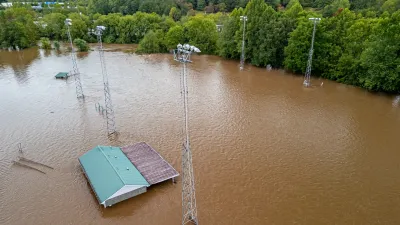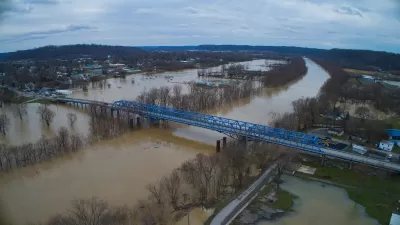This week, New York's Metropolitan Transportation Authority made public its request for $5 billion in federal aid to rebuild what was damaged during Superstorm Sandy. But a look at the details reveals an ambitious agenda for improvements.
Matt Flegenheimer takes a close look at the MTA's cost estimates for rebuilding infrastructure damaged during Superstorm Sandy relased this week, and finds "a window into the agency’s dual considerations as it counters unprecedented damage across the system: making short-term repairs to key structures, like subway equipment and tunnels, while enacting previously unplanned infrastructure improvements in the long term — ideally with considerable assistance from the federal government."
“Even FEMA will tell you, don’t replace in kind if you can replace and harden and improve,” Thomas F. Prendergast, the president of New York City Transit, said on Tuesday, referring to the Federal Emergency Management Agency. “And they’re willing to pay for that cost.”
"Mr. Prendergast noted that the figures were 'order of magnitude' estimates that were subject to change significantly. But he also hinted at the delicate art of securing disaster reimbursement. 'When you’re dealing with third parties who may reimburse you, you never want to start low and then work high,' he said, adding that 'you don’t want to pad,' either."
FULL STORY: M.T.A. Seeks Aid Not Just for Repairs, but for Improvements

Planetizen Federal Action Tracker
A weekly monitor of how Trump’s orders and actions are impacting planners and planning in America.

Maui's Vacation Rental Debate Turns Ugly
Verbal attacks, misinformation campaigns and fistfights plague a high-stakes debate to convert thousands of vacation rentals into long-term housing.

San Francisco Suspends Traffic Calming Amidst Record Deaths
Citing “a challenging fiscal landscape,” the city will cease the program on the heels of 42 traffic deaths, including 24 pedestrians.

Amtrak Rolls Out New Orleans to Alabama “Mardi Gras” Train
The new service will operate morning and evening departures between Mobile and New Orleans.

The Subversive Car-Free Guide to Trump's Great American Road Trip
Car-free ways to access Chicagoland’s best tourist attractions.

San Antonio and Austin are Fusing Into one Massive Megaregion
The region spanning the two central Texas cities is growing fast, posing challenges for local infrastructure and water supplies.
Urban Design for Planners 1: Software Tools
This six-course series explores essential urban design concepts using open source software and equips planners with the tools they need to participate fully in the urban design process.
Planning for Universal Design
Learn the tools for implementing Universal Design in planning regulations.
Heyer Gruel & Associates PA
JM Goldson LLC
Custer County Colorado
City of Camden Redevelopment Agency
City of Astoria
Transportation Research & Education Center (TREC) at Portland State University
Jefferson Parish Government
Camden Redevelopment Agency
City of Claremont





























